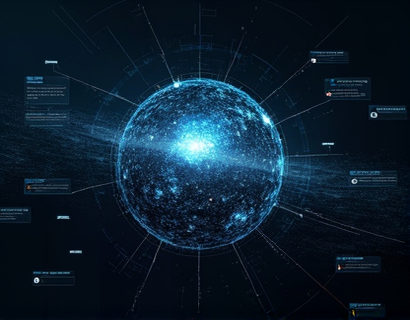Maximize Your Multi-Channel Announcements: A Strategic Guide for Businesses and Individuals
In today's fast-paced digital landscape, effective communication is crucial for businesses and individuals aiming to stand out and connect with their audience. Multi-channel announcements offer a powerful way to reach a broader audience, but managing these announcements across various platforms can be challenging. This comprehensive guide provides expert strategies to streamline your publishing process and enhance message visibility, ensuring maximum reach and engagement. By adopting a user-friendly approach, this guide is tailored for businesses and individuals seeking robust multi-channel solutions to optimize their communication strategy.
Understanding Multi-Channel Communication
Multi-channel communication involves using multiple platforms to disseminate information to your audience. This can include social media, email newsletters, websites, blogs, and more. Each channel has its unique audience and engagement dynamics, making it essential to tailor your messages accordingly. The key to successful multi-channel communication lies in consistency, clarity, and relevance across all platforms. By ensuring your message is cohesive and aligned with your brand's voice, you can build trust and credibility with your audience.
Benefits of Multi-Channel Announcements
Engaging your audience through multiple channels offers several advantages. Firstly, it increases the likelihood of reaching a wider audience, as different people consume information through various platforms. For instance, while some may prefer social media for real-time updates, others might rely on email for detailed information. By using multiple channels, you can cater to these diverse preferences, ensuring no segment of your audience is left behind.
Secondly, multi-channel announcements enhance message visibility and retention. Repeating your message across different platforms reinforces its importance and helps it stick in the minds of your audience. This repetition can lead to higher engagement rates, whether through likes, shares, comments, or direct responses. Additionally, a well-coordinated multi-channel approach can improve your brand's visibility, making it more memorable and recognizable.
Challenges in Multi-Channel Communication
While the benefits are clear, managing multi-channel announcements comes with its own set of challenges. One of the primary issues is the complexity of coordinating messages across multiple platforms. Each platform has its own set of rules, audience behaviors, and optimal content formats. For example, a tweet that works well on Twitter may not translate effectively to LinkedIn or Facebook. This requires a strategic approach to content creation and distribution.
Another challenge is maintaining consistency in branding and messaging. With multiple channels, there's a risk of sending mixed signals to your audience if the tone, style, or information varies significantly. This can dilute your brand's identity and confuse your audience. To avoid this, it's essential to have a clear brand strategy and guidelines that all channels adhere to.
Strategies for Effective Multi-Channel Announcements
To overcome these challenges and maximize the impact of your multi-channel announcements, consider the following strategies:
1. Develop a Content Strategy
A well-defined content strategy is the foundation of successful multi-channel communication. Start by identifying your key messages and the value they bring to your audience. Determine the type of content that resonates best with each platform. For instance, visual content like images and videos may perform better on Instagram and TikTok, while detailed articles work well on blogs and LinkedIn.
Create a content calendar to plan and schedule your announcements in advance. This helps ensure consistency and reduces the risk of last-minute scrambles. Your content calendar should include the date, platform, message, and any specific actions you want your audience to take, such as visiting a website or signing up for a newsletter.
2. Utilize Automation Tools
Managing multiple channels manually can be time-consuming and error-prone. Automation tools can significantly streamline your process. Tools like Hootsuite, Buffer, and Sprout Social allow you to schedule posts across various platforms from a single interface. These tools also offer analytics to track performance and adjust your strategy accordingly.
Consider using a project management tool like Trello or Asana to keep track of your multi-channel announcements. These tools help you organize tasks, assign responsibilities, and monitor progress, ensuring nothing falls through the cracks.
3. Personalize Your Messages
While automation is helpful, personalization is key to engaging your audience. Tailor your messages to the specific platform and audience. For example, use a more formal tone on LinkedIn and a friendly, conversational style on Instagram. Personalization can be as simple as addressing your audience by name or referencing local events and trends relevant to their location.
Segment your audience based on their preferences and behaviors. This allows you to send targeted messages that are more likely to resonate. For instance, if you have a segment of your email list that has shown interest in a particular product, send them a focused announcement about that product across all relevant channels.
4. Monitor and Adjust
Continuous monitoring and adjustment are crucial for optimizing your multi-channel announcements. Use analytics tools to track engagement metrics such as likes, shares, comments, and click-through rates. Analyze which types of content perform best on each platform and adjust your strategy accordingly.
Pay attention to audience feedback and comments. This direct input can provide valuable insights into what your audience likes and dislikes. Use this feedback to refine your content and improve future announcements. Regularly review your overall performance to identify trends and areas for improvement.
5. Cross-Promote Your Announcements
To maximize reach, cross-promote your announcements across different channels. For example, share a blog post on your social media platforms, include a link to your newsletter in your email signature, and post summaries of your content on various forums and communities. This cross-promotion helps drive traffic to each platform and keeps your audience engaged across multiple touchpoints.
Consider creating a central hub, such as a dedicated landing page or a section on your website, where you aggregate all your multi-channel announcements. This central location serves as a one-stop-shop for your audience, making it easier for them to stay informed and engaged.
Best Practices for Multi-Channel Announcements
In addition to the strategies mentioned, here are some best practices to enhance your multi-channel communication:
1. Know Your Audience
Understanding your audience is fundamental to effective communication. Conduct research to gather insights into their demographics, preferences, and behaviors. Use this information to tailor your messages and choose the most appropriate channels. For example, if your audience is primarily professionals, LinkedIn and industry-specific forums may be more effective than casual social media platforms.
2. Maintain Brand Consistency
Consistency in branding and messaging is crucial for building recognition and trust. Ensure that your logo, color scheme, and tone of voice are uniform across all channels. This consistency helps reinforce your brand identity and makes it easier for your audience to identify and remember you.
3. Use Eye-Catching Visuals
Visual content can significantly enhance engagement. Use high-quality images, infographics, and videos to make your announcements more appealing. Visuals can help convey complex information quickly and make your content more shareable. However, ensure that your visuals are optimized for each platform's specifications to maintain quality and loading speed.
4. Encourage Interaction
Engagement is a two-way street. Encourage your audience to interact with your announcements by asking questions, hosting polls, or inviting feedback. Respond promptly to comments and messages to build a sense of community and show that you value your audience's input. Interactive content not only increases engagement but also provides valuable insights into your audience's preferences and concerns.
5. Test and Iterate
No strategy is perfect from the start. Test different approaches and be willing to iterate based on results. Experiment with different types of content, posting times, and channels to see what works best for your audience. Use A/B testing to compare the performance of different versions of your announcements and refine your approach accordingly.
Regularly review and update your multi-channel strategy to adapt to changes in platform algorithms, audience preferences, and industry trends. Flexibility and adaptability are key to long-term success in multi-channel communication.
Conclusion
Maximizing your multi-channel announcements requires a strategic and thoughtful approach. By understanding the benefits and challenges, developing a robust content strategy, utilizing automation tools, personalizing your messages, monitoring performance, and cross-promoting your announcements, you can enhance your communication effectiveness. Following best practices such as knowing your audience, maintaining brand consistency, using visuals, encouraging interaction, and testing iteratively will further elevate your multi-channel efforts.
In a world where attention spans are short and competition is fierce, effective multi-channel communication is not just an advantage—it's a necessity. By implementing these strategies and best practices, businesses and individuals can ensure their messages reach and resonate with their audience, driving engagement and achieving their communication goals.










































